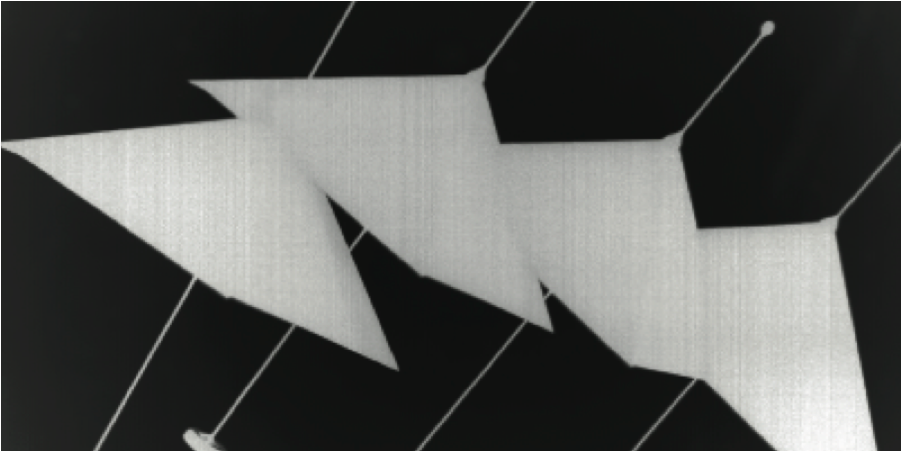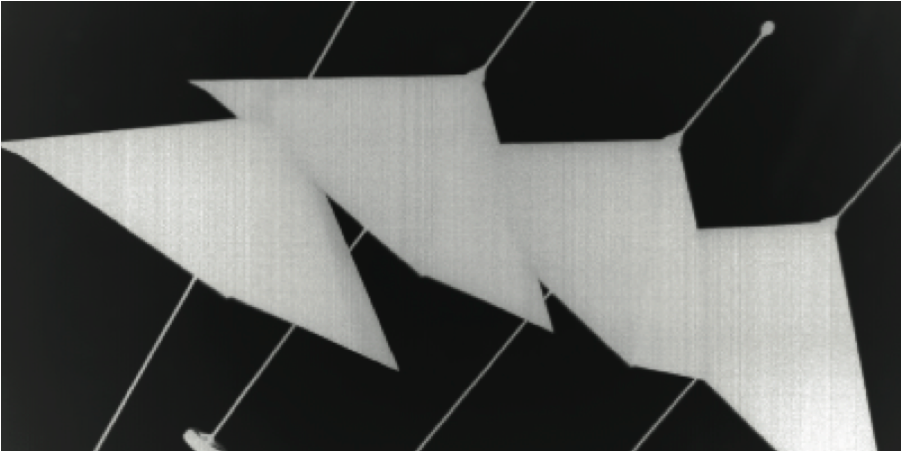Floats Like a Pyramid
Insects fly by moving their wings in a flapping motion. Fixed-wing flight is a relatively simple physical problem, but flight through the flapping of wings is trickier, not only for propulsion but also for maintaining balance and keeping aloft. While some progress has been made with robotic wings, simulating an insect in its entirety, rather than just its wings, is complicated. Whether insects in flight are intrinsically stable or unstable is therefore still an open question.
Writing in Physical Review Letters, Bin Liu and co-workers at New York University present results from experiments on an inanimate pyramid-shaped flyer, or “bug.” Their choice of the shape was made in view of previous experiments with tethered flight, which showed that pyramids could hover in an airflow. Instead of having the flyer move its parts, they used a subwoofer (a low-frequency audio speaker) to create vertical oscillations in a column of air. Varying the center of mass of the “bugs,” the team observed variations in stability and hovering for various configurations, and now presents a comprehensive study of flight behavior that is correlated with the anatomy of the flyer. While the “bug” is far from a realistic analogy for an insect, the unsteady flow mechanisms revealed through these experiments can help address current disagreements among models that assess the intrinsic stability of flying insects. The next step could be to replace the pyramids with a mobile robot for a better simulation. – Daniel Ucko





